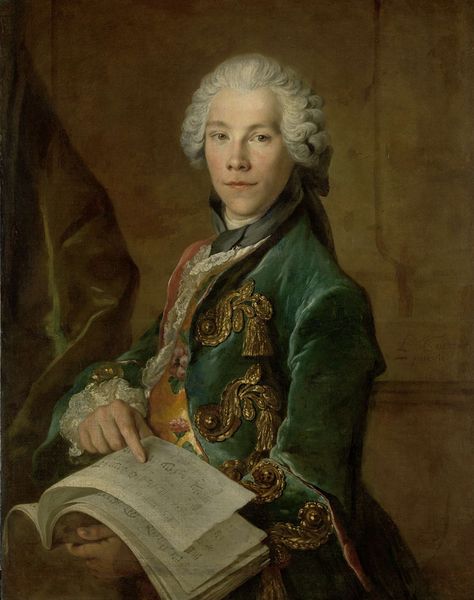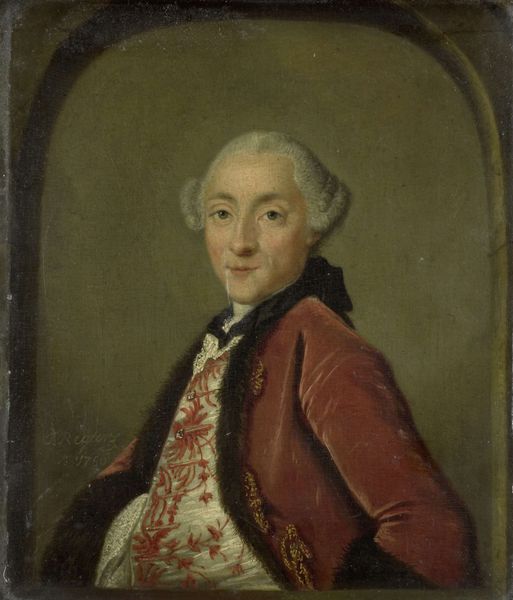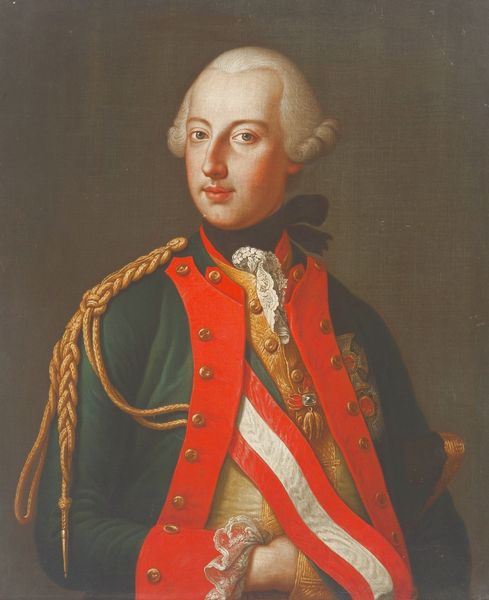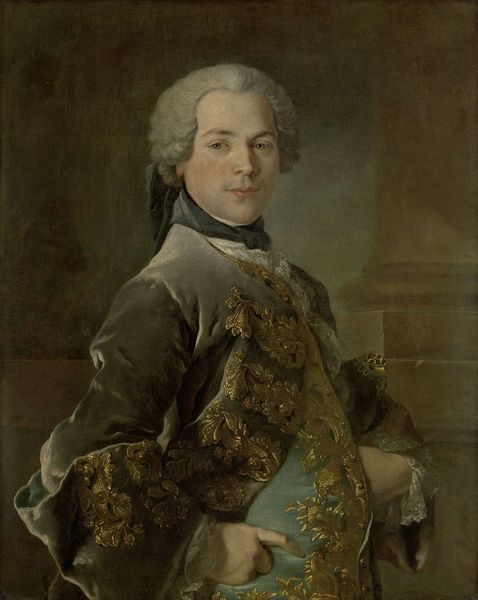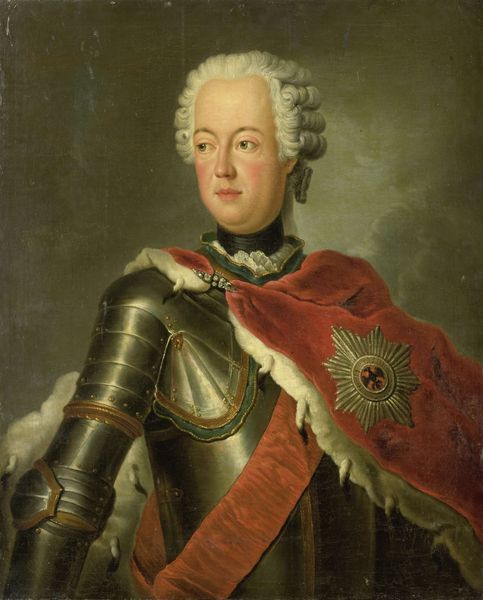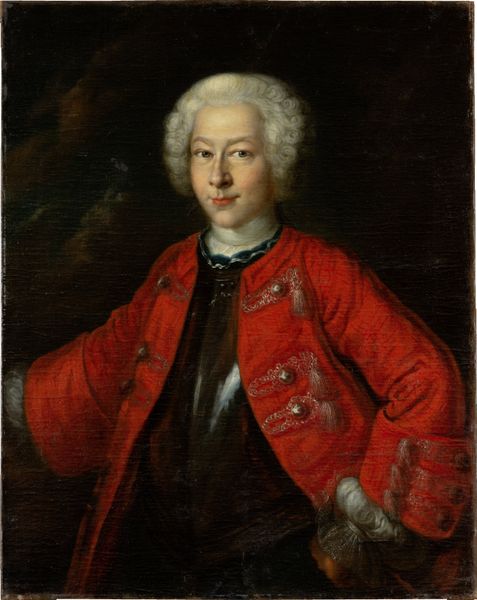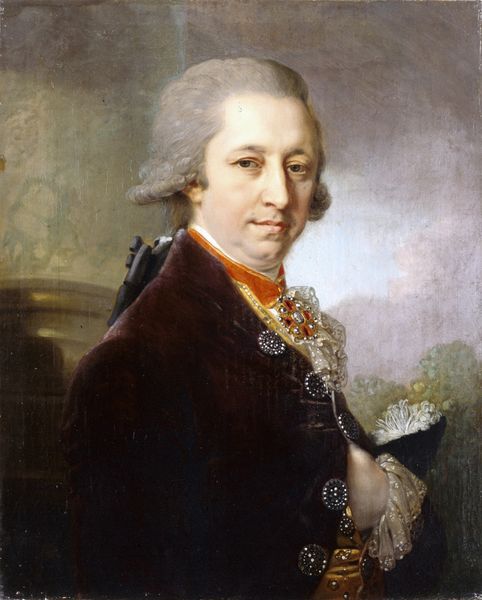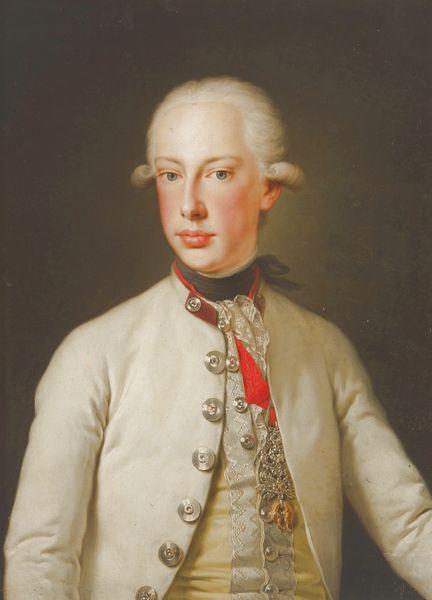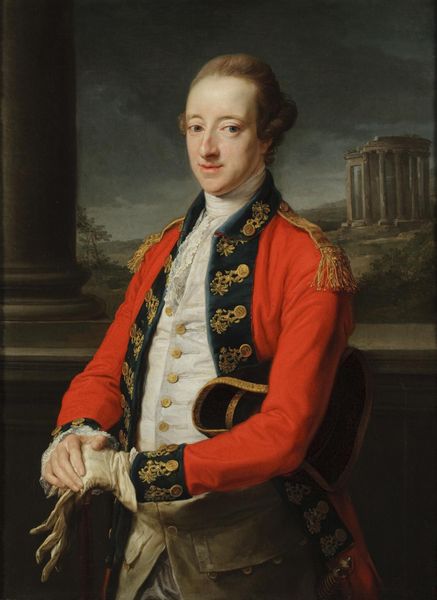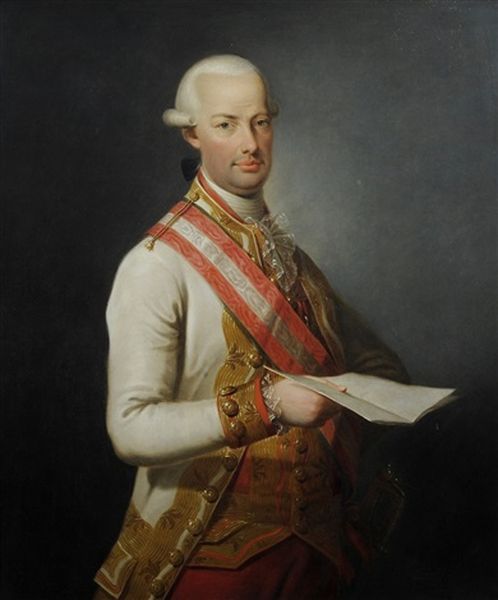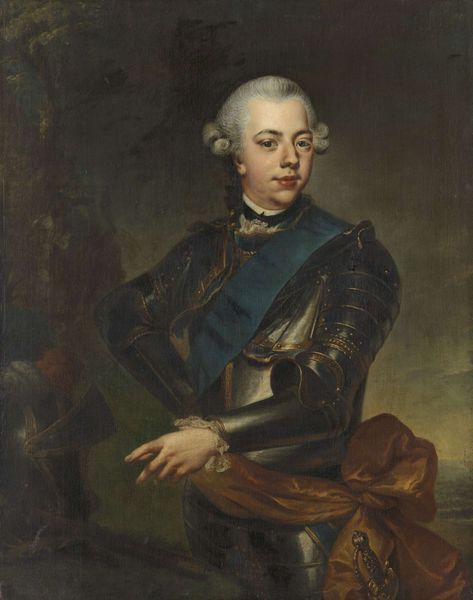
oil-paint
#
portrait
#
character portrait
#
oil-paint
#
portrait reference
#
portrait head and shoulder
#
animal drawing portrait
#
portrait drawing
#
facial portrait
#
academic-art
#
portrait art
#
fine art portrait
#
rococo
#
celebrity portrait
#
digital portrait
Dimensions: height 92 cm, width 71 cm, depth 5.3 cm
Copyright: Rijks Museum: Open Domain
Johann Georg Ziesenis painted this portrait of William V, Prince of Orange-Nassau, sometime in the mid-18th century. As a formal portrait, it tells us much about the status and authority of its subject, and the role of art in projecting power. The image operates through visual codes of wealth and status: the Prince’s powdered wig, his ornate military garb, the confident pose, all communicate authority and a sense of dynastic continuity. The Netherlands at this time was a complex republic, and the House of Orange occupied a central, if contested, role. William's dress is not simply personal preference. It reflects the entrenched hierarchies of 18th-century Dutch society. To fully understand this work, we need to look at the history of the Dutch Republic, the politics of the House of Orange, and the conventions of portraiture in the period. Art history gives us the tools to unpack the social and institutional contexts that shaped both the production and reception of this image.
Comments
No comments
Be the first to comment and join the conversation on the ultimate creative platform.
